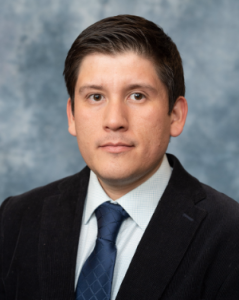Lecture 0.2
Title: Tutorial — In Python you gotta start at zero
Lecturer: Dr. Luis Aguilera
Lecturer Website: https://www.engr.colostate.edu/~munsky/
Lecturer Email: luis.aguilera@colostate.edu
Learning Objectives:
To load the python modules commonly used to work with microscope data.
To understand what is a digital image.
- To understand what is a monochromatic image and a color image.
- To select and slice the dimensions in a sequence of microscope images.
- To apply different filters to remove noise from the image.
- To perform basic mathematic operations, including rotation, translation, and scaling.

Dr. Luis Aguilera obtained his Ph.D. in Biomedical Engineering and Physics from the National Polytechnic Institute in Mexico. Luis Aguilera works as a postdoc at Colorado State University with Dr. Brian Munsky applying computational algorithms to integrate single-molecule gene expression data with stochastic models. He is also interested in developing open-source software in Python to interpret complex biological systems, such as viral infections and innate immune response.
Title: In Python you gotta start at zero
Abstract: This tutorial provides a list of procedures to analyze microscope images. The notebook describes what a digital image is. How to extract relevant information from the image. At the end of the tutorial, the student is expected to acquire the computational skills to implement the following list of objectives independently.
Suggested Reading or Key Publications:
-
- scikit-image: image processing in Python https://peerj.com/articles/453/
- https://forum.image.sc
Links to Relevant Software:
-
- https://imagej.net/software/fiji/
- https://www.cellpose.org
- https://opencv.org
- https://imagej.net/software/fiji/
- Question 1. Make an image showing just the red channel at the 23 time point of the tensor video
- Question 2. Make a smaller image that is compressed to 1/2 resolution in X, and 1/3 resolution in Y.
- Question 3. Make a color image (3 channels) where you magnify the blue channel by a value.
- Question 4. Create a new video image tensor, which is centered around the brightest pixel of the image and is a 50×50 cutout of the original video/tensor. Do this before and after applying a gaussian filter
- Question 5. Make an image that is mirror flipped vertically, and one that is flipped horizontally